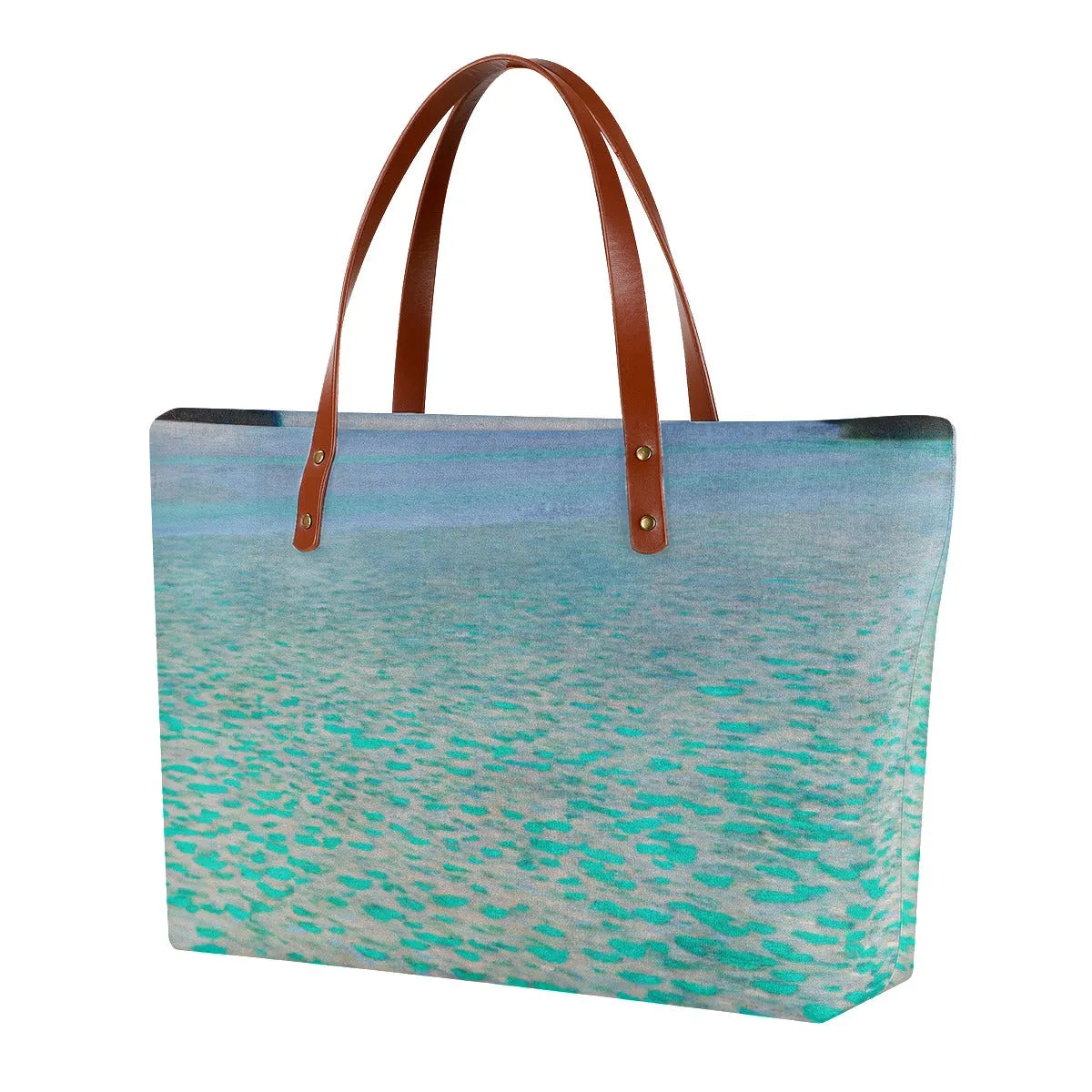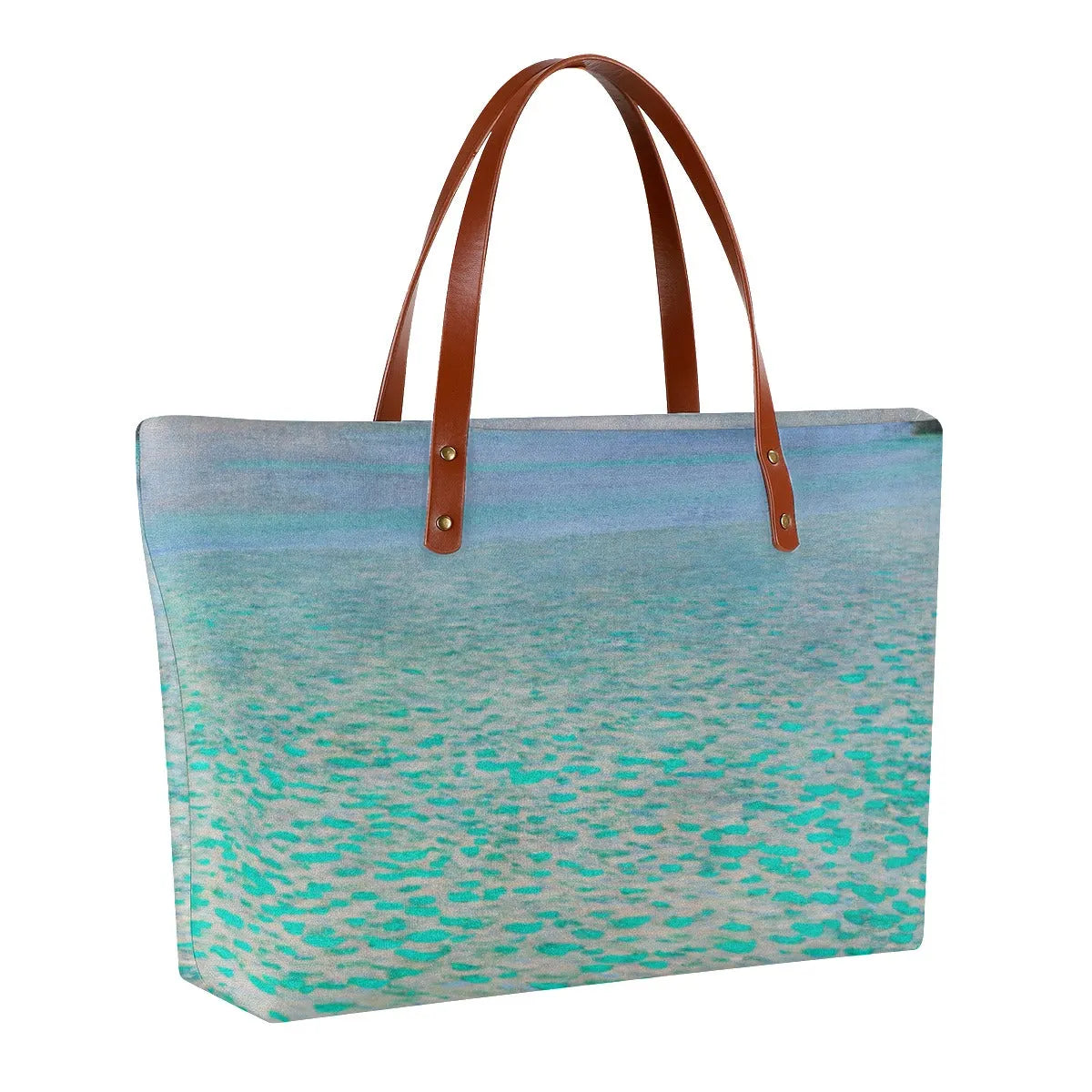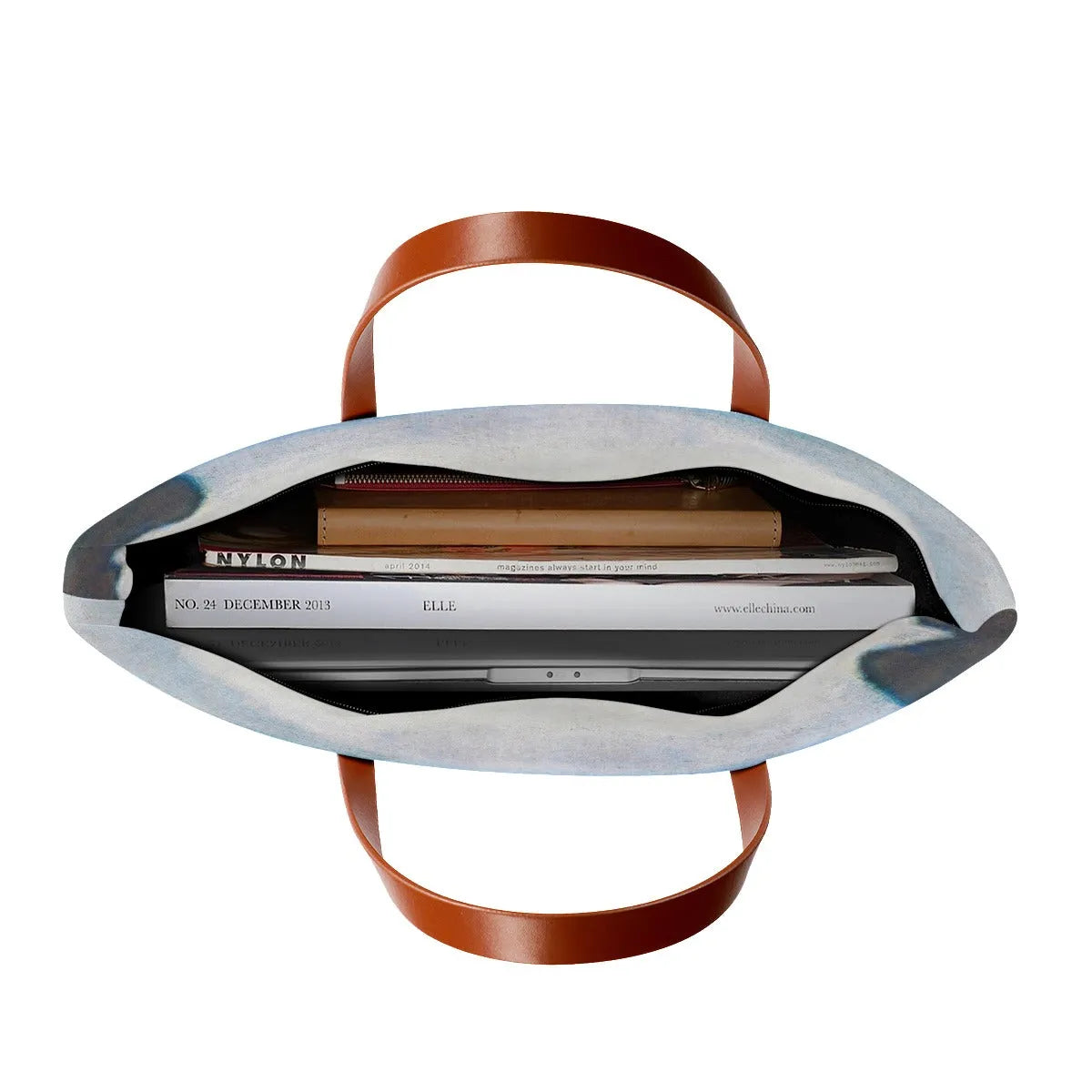



Attersee Painting by Gustav Klimt Art Tote Bag
Behold the allure of the "Attersee Painting" by Gustav Klimt, impeccably reproduced on this exclusive tote bag. As you savor the enchanting blend of vivid colors and intricate patterns, you'll appreciate the attention to detail that truly captures the essence of the original artwork. Whether you're strolling through art galleries, attending social gatherings, or simply running errands, this tote bag effortlessly complements your style, making a powerful statement about your passion for art.
Experience the magic of the "Attersee Painting" by Gustav Klimt through this remarkable tote bag, where art and fashion unite harmoniously. Let the soft, durable material cradle your belongings while the masterpiece inspires your imagination. Enhance your everyday life with a touch of culture and creativity, celebrating the genius of a renowned artist while making a statement about your unique taste and appreciation for the arts.
- Made of Diving Cloth
- Waterproof Fabric
- Large capacity
- Black zipper and Lining
- Brown strap
- Double-sided Famous Painting Art
Known for his opulent and decorative style, Klimt created a visual language that combined intricate patterns, rich symbolism, and sensual portrayals of the human form. Here are all of Gustav Klimt's Famous Paintings.
About the artwork
We are aiming to have your order dispatched from our facility within 48 hours. However, please bear with us in case we are spending extra time in checking / perfecting your items, particularly during the peak season around end of the year. This does not include weekends or holidays.
Purchases made after 6pm PT will not be shipped out until the next business day. If you order after 6pm PT on a friday, your order will likely be shipped out on the following monday. For more information click here.
We provide a return policy, allowing customers to return products within a specified timeframe if they are not completely satisfied. For more information click here.
We offer a range of secure payment methods, including major credit cards and debit cards such as Mastercard, Visa, and American Express. Additionally, we support digital wallets like Apple Pay and allow for seamless transactions through trusted platforms like PayPal. For more information click here.
Choose options




20% Off Everything - Limited time only.
Enjoy Free Shipping on All Orders!
